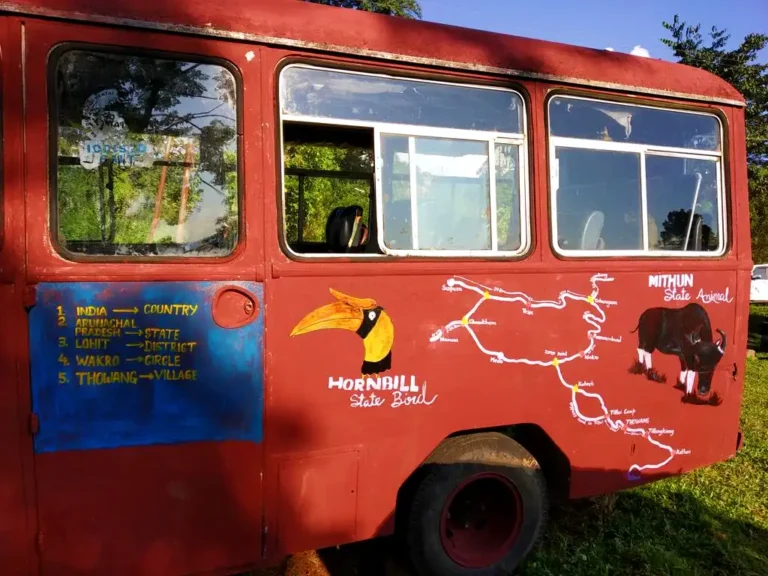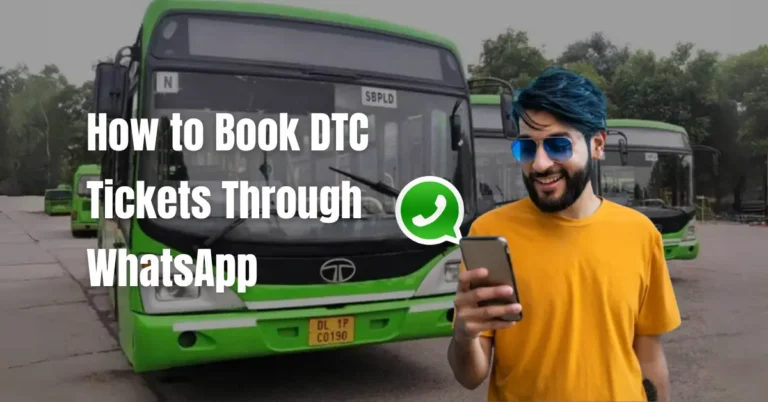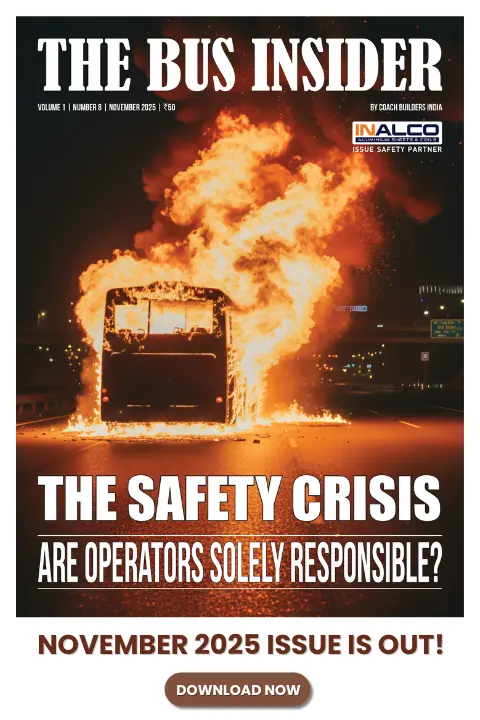Can Electric Buses Go the Distance? LeafyBus’ CEO Rohan Dewan Is Betting on It
Bus operator interview: LeafyBus CEO Rohan Dewan shares what it takes to power an electric fleet in a diesel-dominated world and why policy gaps still keep private players from plugging in.

In a country where diesel still rules the highways, one startup is betting on electric volts over fossil fuels. In December 2024, New Delhi–based LeafyBus rolled onto the scene with a daring mission – to prove that electric buses can conquer India’s long-haul routes, and still turn a profit, even in the hands of a private operator.
At the wheel of this disruption is industry veteran Rohan Dewan, who spent 14 years managing his family’s bus business before launching a fleet built for the future. Today, supported by a 46-member team, LeafyBus operates 10 electric buses across two routes in three states, with plans to scale up to 100 buses by 2026.
Dewan’s vision is simple but ambitious – to modernize and standardize intercity travel, with sustainability at the core.
In this candid conversation with Coach Builders India, Dewan reflects on the challenges of launching an electric fleet in a diesel-dominated market, the policy gaps holding back private adoption, and why fast-charging infrastructure has become LeafyBus’s biggest competitive edge.
Also Read: Manoj Soni’s Vision to Transform YoloBus into a Smart, Sustainable Mobility Leader
What inspired you to launch LeafyBus? How did your past experience in mobility influence the company’s vision?
Leafybus was born from a deep-rooted desire to modernize and standardize intercity travel in India, a sector long dominated by diesel buses and fragmented service quality. I have spent 14 years managing my family’s bus business in North India, witnessing first-hand the shift from counter-based ticketing to digital platforms like redBus and Paytm.
This evolution sparked a vision to create a tech-enabled, sustainable, and passenger-friendly alternative that could redefine long-distance travel.
What were some of the biggest roadblocks you faced while launching LeafyBus, especially in a market still dominated by diesel intercity buses?
One of the biggest challenges we faced was the lack of high-capacity charging infrastructure for long-distance electric travel. At the time, India didn’t have the kind of fast-charging stations needed to support consistent intercity operations. We had to take the lead in setting up 360 kW fast-charging hubs to enable a daily run of up to 900 kilometers.
Financing was another major hurdle. Electric buses come with a high upfront cost, and securing funding wasn’t easy. But the team’s passion and long-term vision helped us gain the trust of NBFCs like AMU Leasing and Electrigo, who came forward to support us.
Another critical piece was vehicle customization. Every route has different operational demands, and we had to plan bus specifications accordingly, for example, deploying sleeper buses on routes where that format is preferred. These decisions were essential to making the service both efficient and relevant to the market.
“The fast-charging strategy isn’t a supporting feature – it’s a central pillar in the EV-first narrative LeafyBus is writing across highways. It helps us balance sustainability with profitability, reshaping how India moves between cities.”
LeafyBus was among the first to use India’s 360 kW fast-charging setup. How has this tech impacted your route planning and operations?
LeafyBus’s early adoption of 360 kW fast-charging tech has transformed our intercity operations and turbocharged route planning. The ability to recharge in under 50 minutes enables a daily range of up to 900 km, allowing buses to complete three round-trip trips between Delhi and Dehradun with minimal idle time. That’s not just speed, it’s strategic efficiency.
By slashing downtime, we optimized our scheduling and boosted fleet utilization, supporting tight timetables without compromising battery life or passenger comfort. This tech helped achieve 85%+ occupancy rates, validating electric travel’s reliability and economic potential.
What’s more, fast charging gave LeafyBus the confidence to explore longer routes and denser networks, expanding its reach beyond early pilot zones. It also made scaling financially feasible, improving unit economics and attracting fresh investment, like our partnership with JBM to deploy 200 new buses.
Ultimately, this infrastructure is more than an engineering feat – it’s the backbone of LeafyBus’s clean mobility revolution. It helps us balance sustainability with profitability, reshaping how India moves between cities. The fast-charging strategy isn’t a supporting feature – it’s a central pillar in the EV-first narrative LeafyBus is writing across highways.
Also Read: MIC E-Mobility’s Sanjiv Sharma Shares Vision for India’s Luxury Sleeper Bus Segment
How have national policies like NEMMP and FAME-II impacted your business?
Govt. policies have been the cornerstone of Leafybus’s journey, offering more than just subsidies. They’ve laid the foundation for a bold transition to clean intercity travel. As a startup, the financial incentives from these schemes, like subsidies, tax exemptions, and upfront cost reductions, gave Leafybus the breathing room to innovate early and scale confidently.
These initiatives didn’t just ease entry – they created a climate of encouragement. The support emboldened Leafybus to invest in India’s first fast-charging infrastructure, roll out smart onboard tech, and standardize EV fleet operations. Every policy move, from relaxed permits to public trust-building campaigns, served as both shield and springboard, helping the company move from idea to industry force.
In essence, the policy push didn’t just help Leafybus survive – it inspired us to lead the EV transition. And with evolving guidelines and increased investment on the horizon, we are revving up for even bolder chapters in clean mobility.
Are there any policy gaps or on-ground challenges that you believe still need to be addressed for e-bus operators?
Yes, of course! India’s EV policies have definitely helped electric bus startups like LeafyBus take off, but gaps still remain.
FAME-II excludes most private operators, and fragmented state regulations complicate intercity permits. Financing is tough too, short loan tenures and lack of payment security deter lenders. On the ground, fast-charging infrastructure is limited, battery reliability needs improvement, and OEM support is thin for scalable contracts.
To truly accelerate adoption, India needs leasing reforms, shared charging hubs, and incentives for private fleets. These changes could unlock broader participation and make electric intercity travel not just viable, but mainstream. LeafyBus is already navigating this with tech and partnerships.

What’s your view on the infrastructure available for electric buses in India right now? Is the current ecosystem, charging stations, grid access, and maintenance ready for large-scale electric bus operations? What’s still missing, and what needs to change to accelerate the adoption of electric buses across the country?
India’s infrastructure for electric buses is progressing, but it’s not yet fully ready for large-scale adoption. Urban hubs like Delhi and Bengaluru are pioneering fast-charging depots and electric fleets, but most of the country still lacks shared, reliable intercity charging stations. For example, highways and tier-2 cities often don’t have corridor-based hubs, making long routes risky for EV operators.
Grid limitations, such as load constraints and a lack of smart charging, raise downtime and energy costs. Financing infrastructure remains tough too, with land for depots being expensive and loans offering short tenures without guarantees. Battery reliability and maintenance also need improvement, especially during peak summers when SOC drops and overheating are common.
To accelerate adoption, India must build shared charging hubs along highways, integrate smart grids with dynamic tariffs, and develop a stronger maintenance ecosystem through OEM partnerships and regional service centers. Policy reforms like permit & tax exemption, longer loan tenures, and inclusive subsidies for private operators are vital.
LeafyBus is showing that with tech and partnerships, these gaps can be navigated—but for true scale, India needs a holistic push across infrastructure, policy, and financing. It’s not just about adding more buses—it’s about building a backbone for clean mobility.
“Going ahead, buses will no longer be seen as a mode of transport – they’ll become a cornerstone of India’s clean mobility revolution, powered by tech, policy, and private innovation.“
If the government wants more private players to go electric, what kind of support or incentives are truly needed?
To encourage private players to adopt electric buses, the government must offer inclusive and practical incentives. Extending subsidies like FAME-II to private fleets can reduce upfront costs. Banks should be encouraged to offer long-term loans with interest subvention to improve financing.
Establishing shared fast-charging hubs on highways and waiving registration fees and GST for electric buses will cut operational costs. OEMs need support to offer scalable contracts and after-sales service. With these reforms, India can move beyond public-sector dominance and enable a truly market-driven EV transformation, where private innovation powers sustainable mobility.
Also Read: LeafyBus Sets New Benchmark with 360 KW Fast-Charging: Completes 900 km in 24 hrs
As an operator already running an electric bus fleet, do you believe the hesitation among private players to adopt electric mobility is justified? What are they seeing that makes them hold back, and what do you think they may be missing?
Their hesitation is rooted in real challenges. Private operators see high upfront costs, limited access to subsidies, and fragmented state policies that make intercity EV operations complex.
Financing is another pain point – short loan tenures, high interest rates, and a lack of payment security mechanisms make scaling risky. Add to that concerns about battery reliability, resale value, and sparse fast-charging infrastructure, and the caution becomes understandable.
But here’s what they may be missing – the long-term viability and strategic edge. Electric buses offer lower operating costs, smoother rides, and growing public demand for clean travel. With smart tech, fast-charging, and supportive partnerships, early adopters like us are proving that EVs aren’t just sustainable, they’re scalable. The transition may be tough, but the payoff is transformative.
What’s your vision for the Indian bus industry over the next 10 years? What major changes do you expect to see?
Over the next decade, India’s bus industry is set to transform dramatically, from fragmented diesel fleets to a smart, clean, and connected mobility ecosystem. Electrification will lead the charge, with over 50% of new bus sales likely to be electric by 2035, boosted by subsidies, rising fuel costs, and climate goals.
Buses will become tech-enabled assets, featuring real-time tracking, predictive maintenance, and intelligent route planning. Passenger experiences will evolve with airline-like features – dynamic pricing, seat selection, and live updates.
Growth will move beyond metros into tier-2 and tier-3 cities, supported by highway charging corridors and stronger OEM partnerships. Intercity travel will be redefined by premium sleeper EVs, offering comfort and sustainability.
Expect deeper public-private collaboration, with private operators managing fleets while governments build infrastructure and offer policy support. Leasing and financing reforms will unlock participation for startups and SMEs. Looking outward, India will aim for net-zero transport by 2070, and domestic manufacturers may begin exporting electric and hydrogen buses across the globe.
In short, buses will no longer be seen as a mode of transport – they’ll become a cornerstone of India’s clean mobility revolution, powered by tech, policy, and private innovation.
LeafyBus aims to deploy 1,000 electric buses in the next five years. What are LeafyBus’s expansion plans going forward? Are you looking at new states, more routes, or even new service models?
LeafyBus is charging ahead with an ambitious plan to deploy 1,000 electric buses by 2030, and its expansion strategy is as bold as its vision. We are currently scaling from 6 to 100 buses by 2026, starting with 50 new vehicles across Delhi, Uttar Pradesh, Uttarakhand, and Punjab. These routes are chosen for their high demand and supportive EV policies.
Beyond North India, we are eyeing Eastern and Southern states for its next wave of growth, targeting regions with favorable regulatory frameworks and rising intercity travel demand. The company plans to register buses in states offering EV-friendly permits, subsidies, and charging infrastructure.
On the service front, LeafyBus is exploring premium sleeper EVs, tech-enabled booking systems, and AI-powered route optimization to enhance passenger experience. Our “Bus Buddy” assistant and real-time tracking are already setting new standards in intercity travel.
With partnerships like JBM Electric Vehicles and Glida for charging, we are building a scalable model that balances affordability with reliability. The goal isn’t just to grow, it’s to redefine how India moves between cities.
This interview was originally published in the August 2025 issue of our monthly magazine, The Bus Insider.
Catch the latest Bus Industry updates, Exclusive Interviews, Bus News, and International Bus News on Coach Builders India. Download the latest issue of the The Bus Insider magazine for more insights.







